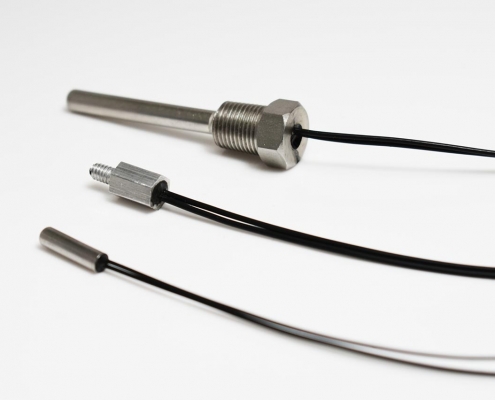NTC Thermistor Probes Have Endless Applications
NTC thermistor probes measure liquid levels and temperature in industries that extend from automotive electronics to medical technology to green energy. Their applications are endless, and their purpose ensures the operability of the applications they serve.
A thermistor probe, can also be as simple as an NTC thermistor chip, encapsulated with epoxy or glass. Or, it can be potted in a metal or plastic housing with two high-temperature insulated wire leads.
These NTC thermistors are in all the places that we live and work, from the moment we wake up and make coffee until the end of the day when we arrive home and relax in front of the television. They are indispensable to the cars we drive to work, the computers necessary to do our jobs, and the appliances we use to prepare food at the end of the day.
Understanding temperature sensing probes and their applications
It is essential to understand how NTC thermistor probes operate, in what capacity, and what their potential is. Part of this understanding includes the electrical properties of probes that abide by certain operating principles, including electrical resistance, responsiveness, pressure, and thermal conductivity.
Given their pervasiveness and range of applications, and despite many thermistor sizes and shapes, it is impossible to manufacture a universal NTC thermistor probe assembly. Temperature sensors used in automobiles are different from the temperature sensors used in wind turbines.
Thermistor probes in automotive innovation
Without thermistor temperature sensing probes, many automobiles, appliances, industrial equipment, and anything that requires feedback control would not function properly, or at all. Engineers depend on these NTC thermistor sensors as a design consideration for any product that generates energy, hot or cold, and requires temperature measurement, compensation, and control.
In 1966, automotive vehicles used around two thermistors per unit. This number grew to 60 thermistors per unit in the 90s, and today there are between 80 to 100 NTC thermistors in one vehicle. The exponential increase in temperature sensing devices parallels the complexity and refinement of technology. As automotive technology has increased and improved, so has the demand for temperature sensors. Car seat heaters, air conditioners, window defrosters, and oil temperature gauges require detection, regulation, and temperature control. Now, as electric vehicles become more common, NTC thermistors are used more than ever. Li-ion batteries in cars have become much more economical in the last 7-10 years. Thermistors are vital for maintaining an ideal battery temperature during the charge and discharge cycle.
Improving technology allows for more features and processes requiring accurate and reliable temperature sensing. For example, thermostats previously measured coolant temperature and controlled the cabin climate; today, thermistors have replaced thermostats as thermistors are faster, more accurate, and more reliable. NTC sensors can also detect oil levels and viscosity, alerting the driver when it needs to be changed.



